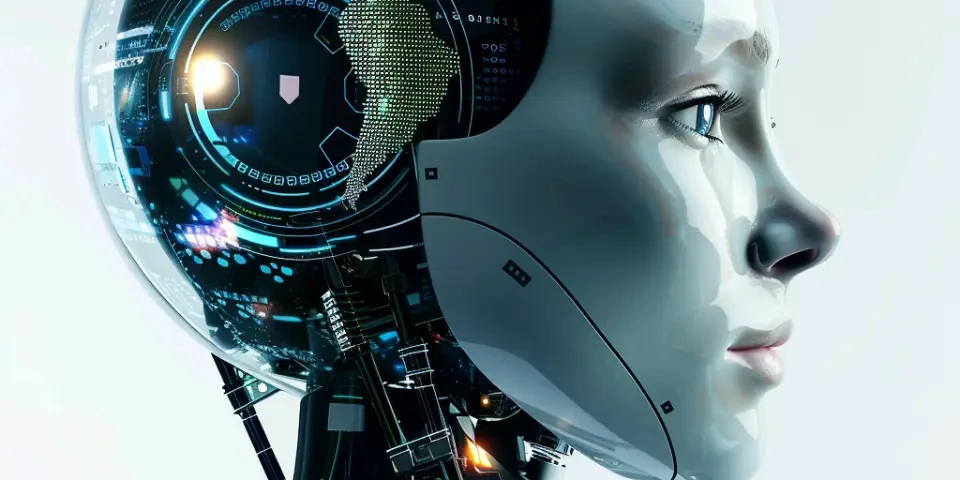From Virtual Assistants to AI Companions Redefining Human-Technology Interactions
Technology has significantly transformed the way we interact with our devices and appliances. From the early days of virtual assistants to the current advancements in artificial intelligence (AI), human-technology interactions have been constantly redefined. This article explores the evolution of these interactions and their impact on our daily lives.
1. Virtual Assistants: The Early Beginnings
Virtual assistants, such as Siri and Google Assistant, have become integral parts of our smartphones and smart devices. Initially designed for performing simple tasks like setting reminders or making phone calls, they have evolved to provide more sophisticated services. With advancements in natural language processing, virtual assistants can now hold conversations, search the web, and even answer complex questions.

However, virtual assistants still have limitations. They sometimes struggle with understanding context or pronunciations, leading to inaccurate or irrelevant responses. Additionally, privacy concerns arise as these assistants always listen for voice commands.
2. Natural Language Processing: The Key to Conversational AI
One of the main challenges in human-technology interactions is enabling machines to understand and respond to natural language effectively. Natural language processing (NLP) plays a crucial role in the development of conversational AI. NLP algorithms analyze human language patterns, enabling machines to interpret meaning and generate appropriate responses.
With the advancements in NLP, AI companions like Amazon's Alexa or Apple's HomePod have gained popularity. These AI companions can perform a wide array of tasks, ranging from playing music and controlling smart home devices to providing weather updates and answering general knowledge questions.
3. The Rise of Emotional AI
Another area where human-technology interactions are evolving is emotional AI. Emotional AI focuses on developing machines that can recognize and respond to human emotions. By analyzing facial expressions, tone of voice, and other cues, emotional AI aims to create personalized and empathetic interactions.
Emotional AI has various applications, including virtual therapy sessions, customer service chatbots, and companion robots for the elderly. It enhances user experiences by providing emotional support and understanding.
4. Personalized Experiences: Tailored to Individual Needs
Technology is becoming increasingly personalized, adapting to individual preferences and needs. AI algorithms analyze user data, such as browsing history, location, and personal interests, to provide tailored recommendations and experiences.
For instance, streaming platforms like Netflix and Spotify use AI algorithms to suggest personalized content based on a user's viewing or listening history. Personalization extends beyond entertainment, with AI-powered virtual shopping assistants recommending products based on individual preferences and previous purchases.
5. Enhanced Accessibility: Inclusive Interactions
Advancements in human-technology interactions have also contributed to enhanced accessibility for individuals with disabilities. Voice recognition technology enables people with visual impairments to interact with devices hands-free, while AI-powered captioning improves communication for the hearing impaired.
Additionally, AI companions and virtual assistants can perform tasks that were once challenging for individuals with limited mobility or dexterity, such as controlling smart home devices or managing schedules.
6. Collaborative AI: Human-Technology Partnerships
Another aspect of human-technology interactions is collaborative AI, where humans and machines work together towards a common goal. Collaborative AI leverages the strengths of both humans and machines, combining human creativity and critical thinking with machine speed and accuracy.
For example, in medical diagnosis, AI algorithms analyze patient data and suggest potential diagnoses, while healthcare professionals use their expertise to validate and interpret these results. Similarly, in creative fields like music composition or design, AI tools provide inspiration and assist in generating ideas.
7. Ethical Considerations: Balancing Benefits and Concerns
As technology continues to redefine human-technology interactions, ethical considerations come to the forefront. Issues like privacy, data security, and algorithm bias need to be addressed to ensure responsible and fair use of AI.
Transparent data practices, rigorous algorithm testing, and diverse development teams can help mitigate these concerns. Striking a balance between the benefits of AI and the potential risks it poses is crucial to foster trust and acceptance in human-technology interactions.
FAQs
Q: Can AI companions replace human interaction?
A: While AI companions provide valuable assistance and personalized experiences, they cannot entirely replace human interaction. Human connections involve emotional understanding, empathy, and complex social dynamics that AI cannot fully replicate.
Q: Are AI companions secure?
A: Developers prioritize security and implement measures to protect user data. However, as with any technology, there is always a risk of vulnerabilities. It is essential to stay updated with security patches and use trusted and reputable AI companion devices or platforms.
Q: Are AI companions biased?
A: AI companions can be biased if not developed and tested properly. Biases can stem from the training data, developer biases, or unintentional algorithmic biases. Addressing bias requires diverse datasets, continuous testing, and ongoing scrutiny.
References
1. John Markoff, "How Siri Found Its Voice," The New York Times
2. Amanda Silver, "What is Natural Language Processing?," Microsoft AI Blog
3. Greg Satell, "Why Emotional AI Is The Next Frontier Of Product Development," Forbes
Explore your companion in WeMate